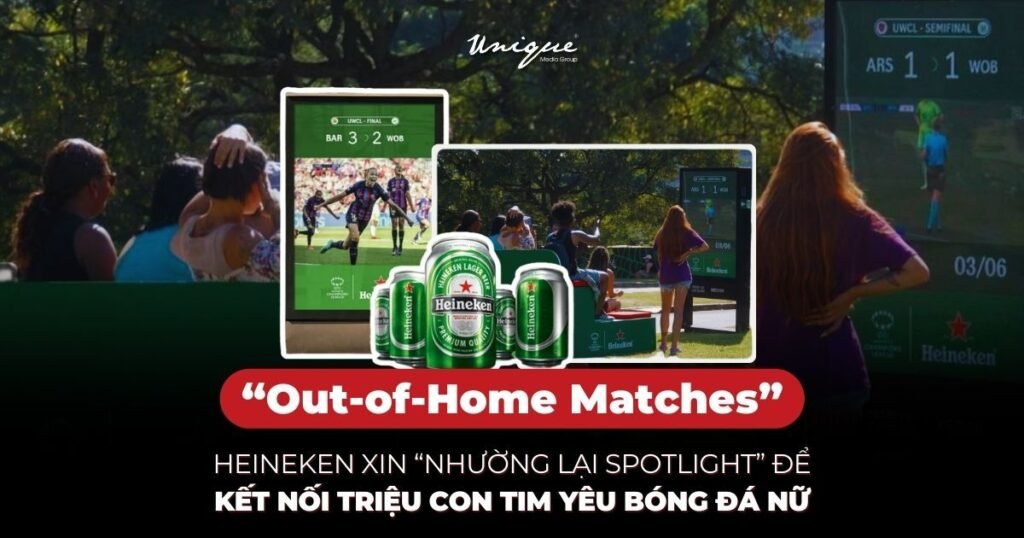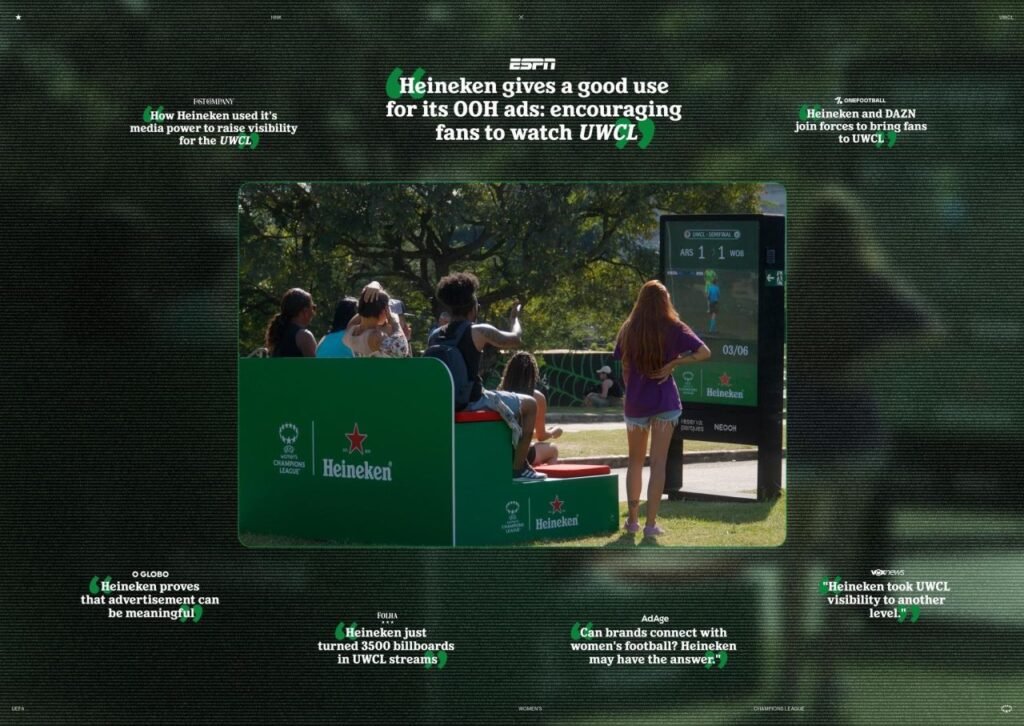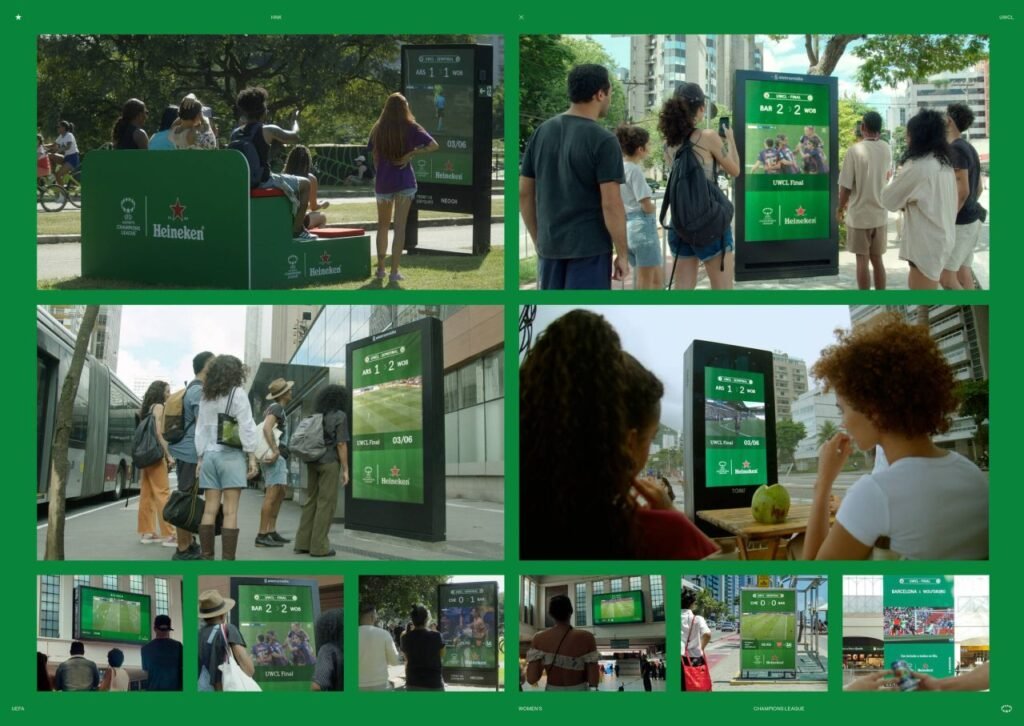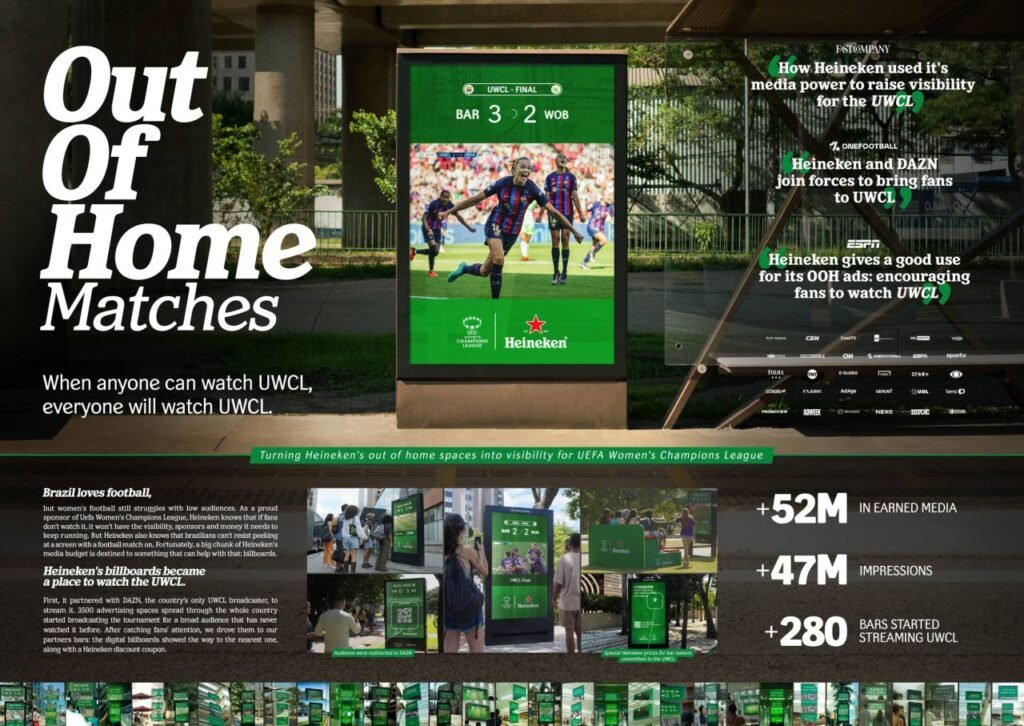In the fiercely competitive world of advertising, where brands constantly vie for attention with vibrant visuals and amplified messages, sometimes the most effective approach lies in stepping back and making room for stories greater than the brand itself. Heineken’s "Out-of-Home Matches" campaign is a vivid testament to this philosophy. By creatively leveraging out-of-home (OOH) advertising, the campaign not only promotes a product but also drives social change, evokes emotions, and builds communities around the passion for women’s football. This serves as a prime example of how advertising can transcend commercial boundaries to become a catalyst for equality and human connection.
The Context of Women’s Football and the Challenge of Gaining Attention

Women’s football has long lingered in the shadow of men’s leagues, grappling with significant disparities in sponsorship, media coverage, and public interest. Matches featuring female athletes are often sidelined, lacking the platform to reach broad audiences, which results in many talents going unrecognized. Against this backdrop, Heineken’s decision to intervene is not just a marketing strategy but a socially impactful action. The "Out-of-Home Matches" campaign, executed in Brazil—a nation renowned for its football fervor—transforms these challenges into opportunities by using OOH advertising to bring women’s football into the spotlight. This initiative not only raises awareness but also encourages community engagement, proving that advertising can bridge the gap between sports and society.
Transforming Out-of-Home Advertising into a Vibrant Stage for Women’s Football
Out-of-home advertising is traditionally known for its static nature, with billboards displaying images and slogans to catch fleeting glances. However, the "Out-of-Home Matches" campaign reimagines this medium with bold innovation. Partnering with the creative agency LePub, Heineken transformed over 3,500 billboards across 13 major Brazilian cities into live-streaming screens for UEFA Women’s Champions League (UWCL) matches. These billboards ceased to be mere advertising spaces and became colossal "public grandstands," where passersby could pause amidst bustling city streets to watch matches, feel the thrill, and immerse themselves in the excitement.

This approach carries multiple layers of significance. First, it challenges the stereotype that football is a male-dominated domain by placing female athletes at the forefront, where millions can witness their talent and passion. Second, it turns urban spaces into shared experiences, inviting people from all walks of life to participate, regardless of gender or background. Finally, it marks a leap forward for OOH advertising, moving from passive "visuals" to immersive "experiences," where technology and creativity combine to deliver profound emotional impact. The broadcasted matches are not just entertainment but a statement on equality, sparking pride and support among viewers.
Integrating Technology for a Multi-Dimensional, Community-Connecting Experience
The campaign’s brilliance extends beyond streaming matches; it lies in its ability to foster seamless interaction. The billboards were equipped with smart technology, displaying directions to the nearest bars serving Heineken, complete with exclusive discount codes. This transformed the traditionally passive OOH experience into an active journey: a passerby stumbling upon a match could be instantly invited to continue the excitement at a bar, sharing the moment with friends over cold beers.

This connectivity taps into the desires of younger audiences, who crave authentic, community-driven experiences. Beyond watching matches, the campaign encourages conversations, cheers, and connections centered around women’s football. The result is a new community of fans, where passion spreads through shared moments. This offers a lesson in how advertising can leverage technology to create lasting value, not only boosting short-term sales but also fostering brand loyalty through meaningful experiences.
Social and Economic Impact: Results Exceeding Expectations
The "Out-of-Home Matches" campaign achieved remarkable figures, drawing over 25 million people to watch matches directly on the streets. Bars serving Heineken were packed, generating media revenue of 52 million BRL (Real Brazilian). These results underscore both economic success and social impact, such as raising awareness for women’s football and encouraging public participation. Furthermore, the campaign earned international recognition, securing the Grand and Silver awards in the Media category at the Clio Awards 2025, cementing its leadership in creative advertising.
These achievements stem from the campaign’s focus on human-centric values over product promotion. By giving the spotlight to women’s football, Heineken crafted a narrative larger than itself, positioning the brand as a supporter rather than the star. This delivers a powerful lesson for the marketing industry: true success comes from touching audiences’ hearts through meaningful messages, building communities, and driving positive change.
Lessons from the Campaign: Applying to Modern Advertising Strategies

The "Out-of-Home Matches" campaign offers several takeaways for other advertising efforts. First, integrating technology into OOH can transform public spaces into vibrant, interactive experiences, enhancing engagement and leaving lasting impressions. Second, focusing on social issues like gender equality not only elevates brand image but also fosters genuine connections with audiences. Finally, the campaign’s success highlights that the most effective advertising tells stories, evokes emotions, and builds communities, rather than just selling products. These principles can be broadly applied, from sports brands to other sectors, to create sustainable impact in today’s society.
Future Vision: Advertising as a Force for Social Change
Looking ahead, campaigns like "Out-of-Home Matches" pave the way for a new era of advertising, where brands compete not only for market share but also to contribute to broader social goals. In the future, more campaigns may use OOH combined with technology to support overlooked areas like women’s sports, environmental causes, or education. This not only helps brands stand out but also builds a more connected world, where advertising serves as a catalyst for positive change. Heineken’s campaign is an inspiration, proving that by making room for meaningful stories, brands can shine in the most sustainable way.
Source: Unique OOH
Update the latest information on Marketing at here or Youtube.


